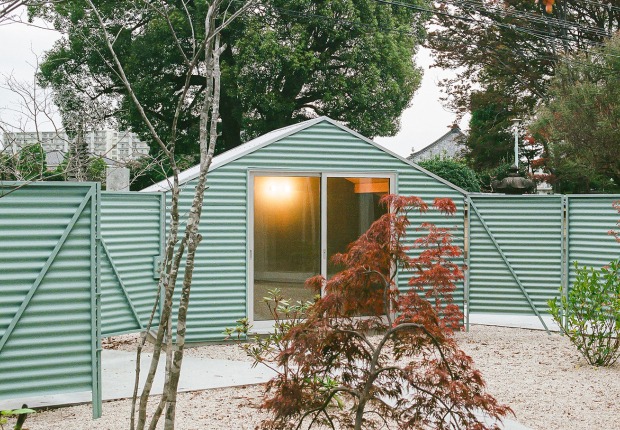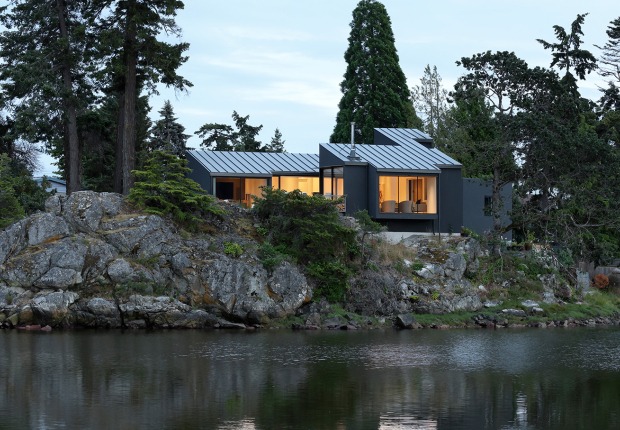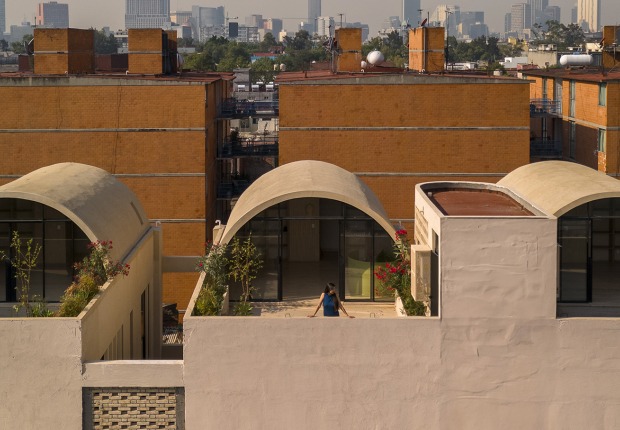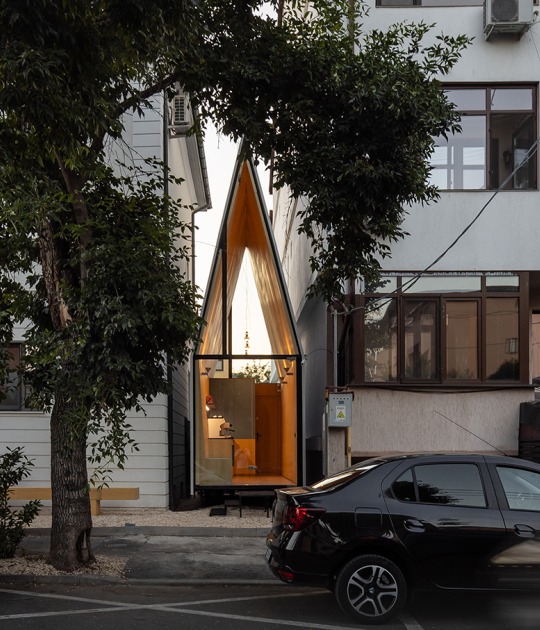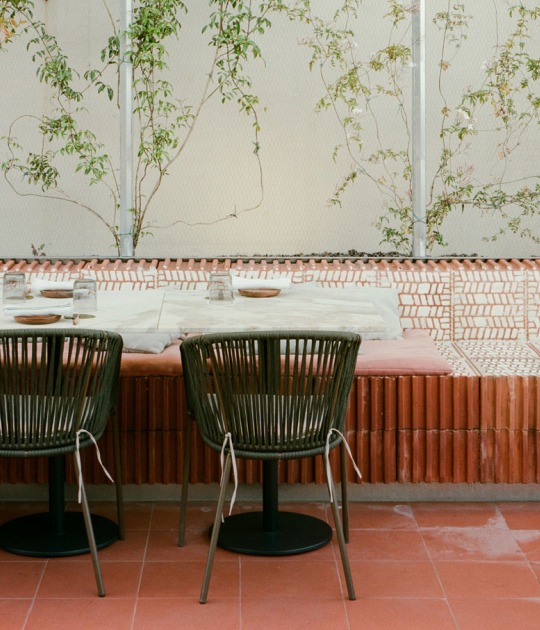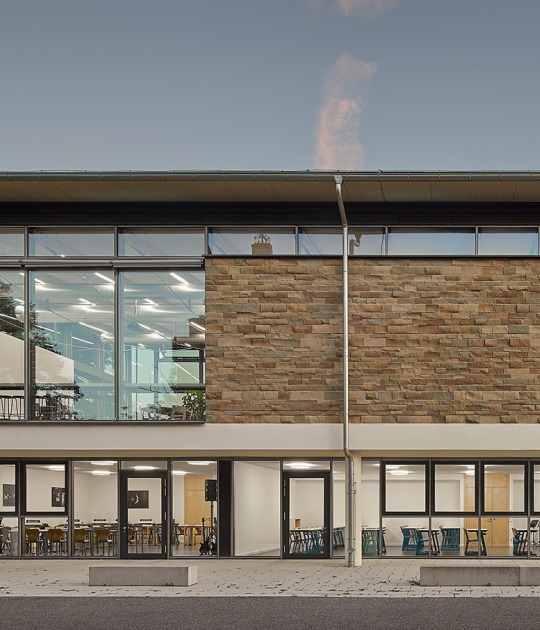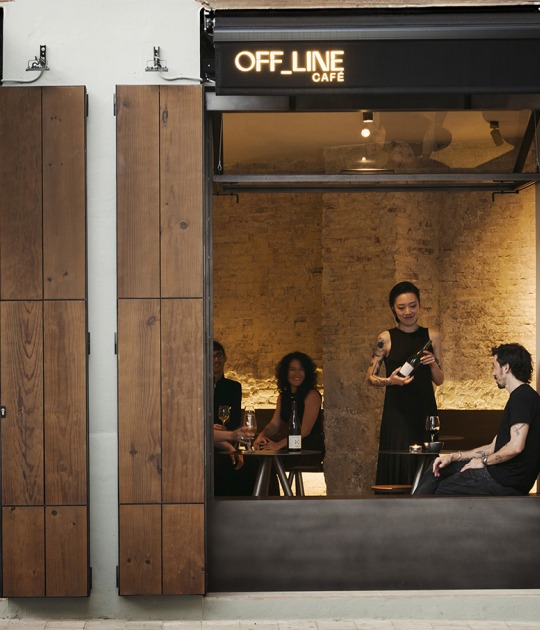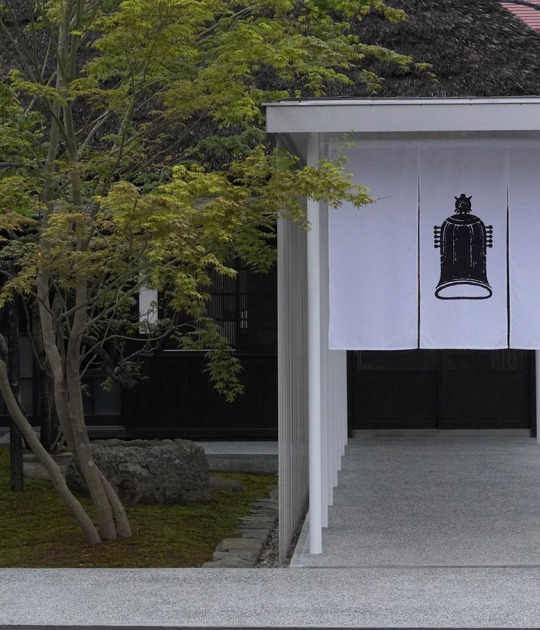Designed to be a flexible space for future changes of use, the restaurant is located in the main boat of 20 meters long and the kitchen, as an auxiliary space, is in a smaller boat separated by a bridge prepared for the racking of waiters.
Description of project by Adam Richards Architects
Adam Richards Architects has designed a custom-built barge which will provide a unique setting to a new London restaurant, The Cheese Barge. The floating restaurant creates a new distinctive focal point and destination for Paddington Central and the wider area. Commissioned by British Land to be permanently moored at Paddington Central, just south of Little Venice, The Cheese Barge will add to the vibrancy of the campus, which comprises office, residential and retail, while also attracting local visitors and tourists.
The design draws on local heritage and complements the surrounding boats, while standing out with its original and distinctive appearance. The boat’s curving, sloping roof is clad externally in verdigris-coloured patinated metal. On the underside of this roof, a copper colour is visible from inside the boat, creating a warm and convivial interior as it gathers the light reflected off the surface of the water. The fit-out is enhanced by a natural material palette of oak and recycled elements. Raven Collective’s interior integrates nautical references in the form of reclaimed ship passageway wall lights, boat cleats and buoy-like table lamps, reflecting the ethos of traditional and thoughtful British craftsmanship as seen in restaurateur Mathew Carver’s flagship restaurant, The Cheese Bar.
Adam Richards Architects’ design was the winning entry in a design competition organised by British Land in spring 2018. The design takes inspiration from James Stirling’s Electa bookshop pavilion in the gardens of the Venice Biennales (Giardini della Biennale), which is itself inspired by nautical design. In researching the Paddington area, the practice found further inspiration in a story from local history. Hertha Marks Ayrton, a pioneer female electrical engineer, lived in Paddington from 1903-23. She was the first woman to speak at the Royal Society, the first female recipient of the Royal Society’s prestigious Hughes Medal, and the author of The Electric Arc. Copper is commonly used in electrical experiments due to its high levels of conductivity, and the barge’s signature roof and interiors are inspired by Ayrton’s story.
Designed for flexibility of use and future-proofed for a range of different operators, the restaurant is located in the main 20 metre (65 foot)-long barge, and the kitchen is treated as an ancillary space accommodated in a separate, smaller boat; the two spaces are linked by an external bridge which will provide a theatrical stage for the arrival of food to diners. The main barge draws on the forms of traditional British canal boats, its roof structure suggesting both the tarpaulin covers used on working canal barges, and the traditional inclined sides of canal boats. The smaller boat is inspired by traditional nautical buoys, used to warn ships of hazards using colour, flags or lights. By placing the kitchen in the buoy, the amount of usable floor area in the main boat for restaurant seating is maximised.
The Cheese Barge entrance is at the level of the towpath, with a dining platform and accessible toilet at this level, making the restaurant inclusive for all guests. Further seating is at the lower level, increasing the number of covers to 40. A band of glazing sweeps around the sides and front of the boat, giving diners generous views of the canal and towpath and granting passers-by a glimpse inside.
The terrace on the upper deck is encircled by a demountable balustrade, allowing the boat to pass through the locks and tunnels of the canal system when in transit. The boat is formed from a skeleton of steel framing elements clad in steel plates, which have been assembled and welded by hand by a marine fabricator in Somerset.
"It is wonderful to be asked to design a space for the pleasurable activity of eating and drinking on the canal. The barge creates a festive and sophisticated environment, whilst drawing on the heritage of narrow-boat design and local social history. It has also been an opportunity to pay homage to James Stirling’s Electa bookshop in Venice: one of my favourite buildings. That building was inspired by the designs of boats — so it was fun to design a boat based on a building based on a boat!”
Adam Richards, Director, Adam Richards Architects
“We’re really excited to welcome The Cheese Barge to Paddington Central. We’ve invested significantly to improve the retail and leisure offering and this new floating restaurant perfectly complements the increasingly diverse selection of restaurants and bars, both on the campus and along the canal.”
Amanda Raven, Head of Asset Management, Paddington Central
“Hailing from Jersey, I spent my childhood years messing around in boats. So, when the opportunity of opening The Cheese Barge came along, we couldn’t say no! The fact that it was British-made by real craftsmen and designed by some of the best British architects appealed to our continued efforts to support British industry. Win, win! We’ve always set out to create fun restaurant experiences, and what could be more fun than eating the best of British cheese on the Grand Union Canal.”
Mathew Carver, restaurateur, The Cheese Barge























